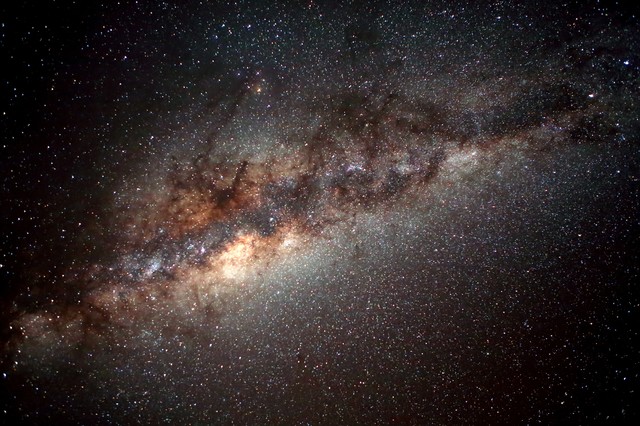Comparative planetology based on material physics
- How planets were formed -
by Shinji Karasawa
PDF version to Japanese version (日本語版へ) next page

[CG was provided by Pixta]
The planets of the current solar system account for only 0.14% of the
total mass of the solar system. That is, the Sun of the solar system account
for 99.86% of the mass of the entire solar system. In the strong heliocentric
gravitational field, the orbiting materials exists only in the orbit determined
by Kepler's third law ; (r3/T2)=G(m+M)/(4π2).
Here M is the mass of the Sun, and m is the mass of orbiting matter. Since
M is very large compared with m, matter in the orbit in the gravitational
field at the center of the Sun has extremely little influence on the magnitude
of the mass (m) and orbits at about the same speed.
Slow contacts occur among cosmic dusts orbiting in the same orbit at
the same speed. When atoms approach each other to about the interatomic
distance, the positive and negative charges of the substance are not canceled
out but undergo chemical interactions such as an intermolecular bond due
to van der Waals forces. At the distance of the size of the atom, the force
of the Coulomb force is 10< SUP >36< / SUP > times greater
than that of universal gravitation. Therefore, when solids of space dust
come into contact with solids, they bond locally at the point of contact
and form lumps. In this way, we propose the theory that cosmic dust became
lumps in the orbit of the gravitational field at the center of the Sun
and became planetesimals and planets.
As a result of the investigation of the asteroid "Ryugu" by the probe "Hayabusa", this asteroid has a structure with many gaps, gravity is weak, and the escape speed is 30 cm / sec, and even at walking speed, it will be ejected into space. This indicates that the interstellar medium makes silent contact and the points of contact adhere to it, resulting in the birth of small celestial bodies.
In the conventional standard model scenario of solar system formation, the explanation is that a proto-star disk was formed from an interstellar molecular cloud, and planetesimals formed in the dust layer, becoming protoplanets, and the disk gas disappeared to form the present planet. However, the theory that the lightest hydrogen molecules gathered together by gravity to form the Sun in the first place is questionable. It also states that there were interplanetary collisions in the formation of planets, but it is questionable how the planets collided with them and how their subsequent revolutions occurred.
In the proposing scenario, cosmic dust that existed in the orbit of the gravitational field at the center of the Sun came into quiet contact and adhered to it due to chemical interaction due to the close-range force at the contact point, forming a mass of cosmic dust and growing into a planetesimal. In the process of growing to the size of a planet, the gravity of the mass itself is weak, so the mass has many gaps. When a lump grows, gravity causes it to reach high pressure and high temperature inside the mass, and the substance undergoes a chemical reaction and reorganizes its internal structure.
As planets accrete at close distances, celestial bodies that have grown greatly increase universal gravitation, which is a long-distance force, so the energy of the impact when a meteorite falls increases.
We will explain the process of the formation of planets in this way from the point of view of the science of matter. (Shinji Karasawa Updated May 18, 2023 )
YouTube:Oxidation of ultrafine iron powders by solid carbon dioxide
YouTube:The internal structure of the Earth explained from the viewpoint ofcondensed matter physics
YouTube:Origins of meteorites
YouTube:Asteroid belt remains debris of the planet that failed to become the second Sun
Youtube:The birth of planets those are understood by condensed the matter physics
[Click on the image to play the video. ]
[to Index]
Chap.1 Introduction
Chap.2 Bonding through contact of fine particles Chap.3 Accumulation of the solar nebula
Chap.4 Formation of planets Chap.5 Birth of the Sun
Chap.6 Formation of the asteroid belt [Conclusion]
[Website of shinji karasawa]
 E-mail:[shinji-karasawa@kbh.biglobe.ne.jp]
E-mail:[shinji-karasawa@kbh.biglobe.ne.jp]